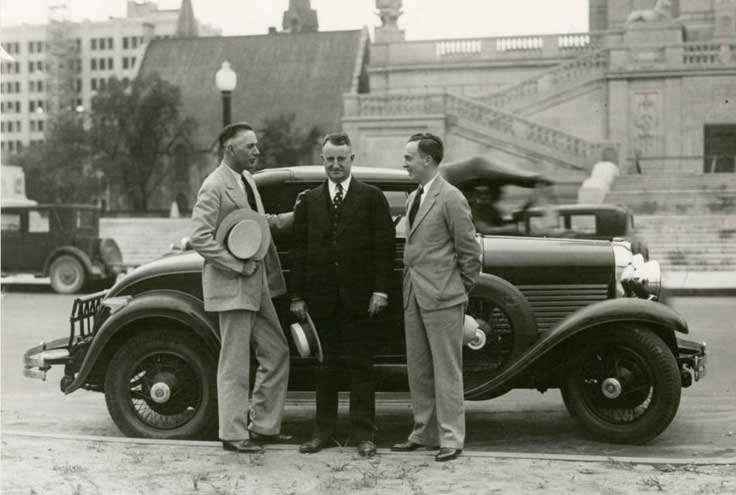
Purchase Tickets
James A. Stuart and Indianapolis Society
February 15, 2018

One part of my job as collections assistant in reference services is to find previously processed collections that, for whatever reason, aren’t as accessible to researchers as they could be. Often these collections were processed many years ago before our current collection guide format was established, and before collection guides were provided online. Recently while perusing the stacks, looking for a fitting case to work on, I came across the papers of longtime Indianapolis Star editor, James A. Stuart.
Stuart, who joined the editorial staff of the Star in 1905, often solicited for publication the opinions of Indiana personalities significant in politics, art and literature. The James A. Stuart Papers at the Indiana Historical Society include the products of these appeals: written replies from Charles W. Fairbanks, Constance Fauntleroy Runcie, George Ade, and many others. A couple of these contacts seem to have blossomed into friendships. The collection contains extensive correspondence from Senator Albert J. Beveridge and author Meredith Nicholson.
My discovery of this collection as a project was lucky on a personal level, too, because the early 20th century is my favorite historical period to work in. My interest in it is largely a cultural one. In his 1909 letter to Stuart, Raggedy Ann creator Johnnie Gruelle demonstrates several levels of that culture. For one, the slang:
“Dear Sir, I hope you will pardon my delay in answering your letter but on the square, I could not think of any dope along the line you ask.”
Translation: “I honestly didn’t know what to say.”
Reason number two, also demonstrated in this letter, the shifts in material culture and technology:
“Give my regards to everybody and say that I hope the next time they see me I will come buzzing up to the door in a 50 H.P. gasoline wagon. My only regret in leaving [Indianapolis] so sudden was that I did not have the opportunity of taking “Side” out in my machine and show him how to climb telegraph poles at 40 miles per hour.”
What a hotdog!
The third cultural aspect of the early 20th century revealed by this letter is more difficult to stomach, and yet more important to understand. Gruelle was responding to Stuart’s inquiry about a character he created that became a widely-beloved mascot for the Indianapolis Star. The character, Jim Crow, appeared with the weather forecast on the front page of the paper, usually with a lighthearted jab at current events. Jim was a literal crow, not a blackface caricature. Still, the name had a specific meaning and was clearly handled very lightly by those who could afford to do so. The fact that “Jim Crow” appeared on the Star’s front page for decades speaks volumes about the pervasive indifference to the struggles of black Americans.
As a whole, the James A. Stuart Papers are a fascinating glimpse into the past. The collection shines a spotlight not only on Stuart’s career in newspaper journalism, but on Indianapolis society circa 1907 to 1930. It is available in our library as collection number M0268. Also, watch for Stuart highlights popping up in digital collections!
Photo: Indianapolis Star managing editor James A. Stuart (center) standds with Everett C. Watkins, Washington correspondent (left) and Francis M. Stephenson, Sentate correspondent for the Associated Press (right) in front of the Indiana War Memorial in 1929.









